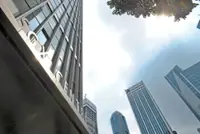Demand peaks in the power system tend to occur in the hotter months of the year and in the afternoons. - ST
SINGAPORE (The Straits Times/Asia News Network): In a first-of-its-kind initiative to get households to help manage the load on the electricity grid, residents in homes equipped with smart meters will be called upon to adjust their electricity usage during peak demand periods.
The initiative, called Residential Demand Response (R-DR), is targeted to start by the second half of 2024 and will tentatively involve about 1,000 households that have smart electricity meters provided by utilities firm SP Group, said the Energy Market Authority (EMA) on Tuesday.
Already a subscriber? Log in
Save 30% OFF The Star Digital Access
Cancel anytime. Ad-free. Unlimited access with perks.





